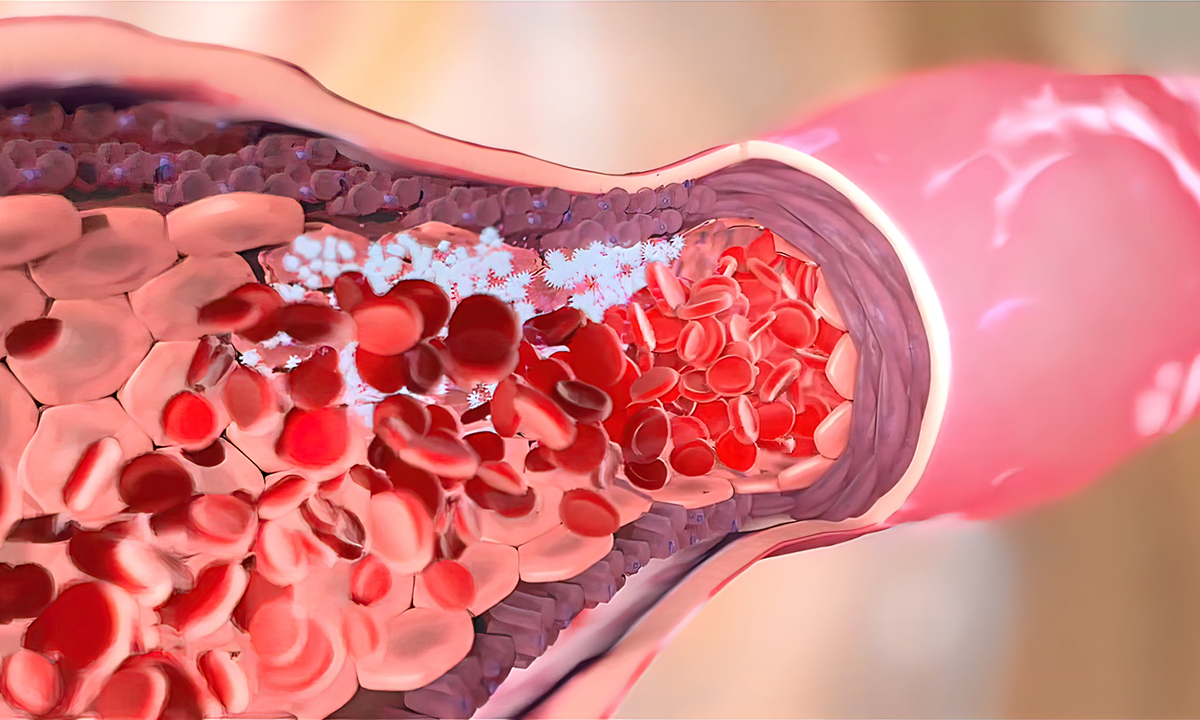
The condition of venous thromboembolism, illustrated here, can be treated using direct oral anticoagulants (DOACs) such as direct factor Xa inhibitors. ARUP’s new chromogenic assays can be used to help assess treatment efficacy.
ARUP Laboratories now offers testing to assess the levels of various direct factor Xa inhibitors, a class of direct oral anticoagulants (DOACs) that are used to treat conditions such as venous thromboembolism and prevent strokes in patients with atrial fibrillation.
Apixaban Level (ARUP test code 3004090), Edoxaban Level (ARUP test code 3004092), and Rivaroxaban Level (ARUP test code 3004094) tests are chromogenic assays that are specifically calibrated to provide quantitative measurements of their respective drug concentrations. “These quantitative assays for direct factor Xa inhibitors offer physicians a way to accurately measure drug concentrations in patients when safety, efficacy, or possible treatment failure may be a concern,” said Karen Moser, MD, medical director of Hematopathology and the Hemostasis/Thrombosis Laboratory at ARUP.
Unlike in patients taking traditional anticoagulants such as warfarin, routine monitoring in those taking direct factor Xa inhibitors is not required. The more predictable drug pharmacokinetics and lower testing burden improve patient care by both decreasing costs and enhancing the patient’s quality of life. However, when efficacy or safety may be a concern, a measurement of direct factor Xa inhibitor activity may be informative. According to Kristi Smock, MD, chief medical director of Research and Development and medical director of the Hemostasis/Thrombosis Laboratory, measuring levels of direct factor Xa inhibitors “may be useful if there are factors that could move drug concentrations outside of expected on-therapy levels, such as decreased renal function, drug-drug interactions, poor drug absorption, or other conditions such as extreme obesity.”
The chromogenic assays offered by ARUP provide measurements for a range of plasma concentrations, including typical on-therapy ranges for each respective direct factor Xa inhibitor. Although there is currently no definitive clinical trial evidence to support adjusting apixaban, edoxaban, or rivaroxaban doses based on anti-Xa activity results, any results outside of the typical on-therapy ranges may contribute to a decision to switch a patient to a non-DOAC treatment.
Research into the optimal use of anti-Xa activity assays is ongoing. “One area to watch is how these tests could be used to support DOAC reversal agents, such as andexanet alfa,” Moser said. Reversal agents may be needed in the rare event of uncontrolled bleeding in a patient taking a DOAC. Current recommendations do not suggest measuring rivaroxaban or apixaban after the administration of DOAC reversal agents, but “further study to determine any potential contribution of anti-Xa activity assays to [inform] use of reversal agents is needed,” said Moser.
For more information about these tests, see the Direct Xa Inhibitor Levels Test Fact Sheet on ARUP Consult.
Visit ARUP’s booth (#3629) at the 64th ASH Annual Meeting and Exposition, December 10–12, 2022, in New Orleans, Louisiana, to meet our contributor, Dr. Kristi Smock.
Katie Pridgen, MA, kathryn.pridgen@aruplab.com
















